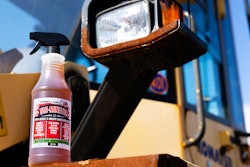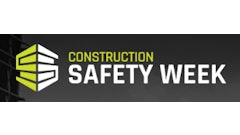
Every year, the national Work Zone Safety Awareness Week is an especially important time. This year, it comes just a few short weeks after a highly publicized story out of Baltimore County, Maryland that killed six construction workers on the Beltway in late March 2023. The names of those struck down were:
- Mahlon Simmons II, 52, and Mahlon Simmons III, 31, who were father and son
- Rolando Ruiz, 46
- Carlos Orlando Villatoro Escobar, 43
- Jose Armando Escobar, 52
- Sybil Lee Dimaggio, 46
According to a local news report, Dimaggio’s husband was too distraught to talk on camera but said, “she loved her job, but this site terrified her.”
Although safety awareness week is broadly focused on the construction industry as a whole, this recent tragedy and its devastation highlights the particular dangers that come with working road building construction. They are unique in certain ways, with factors that other construction work zones don't have to contend with. The biggest of these being distracted drivers flying around your cordoned off space non-stop.
"Once a month, we have the entire operations team, from all the way across the country and Canada on a call," said Mark Ludewig, VP of safety for AWP. "We share best practices, we share incident investigations, we share near misses, we find the determining root cause and contributing factors, and we share it across the entire footprint of our company."
Something that AWP tries to focus on, and that all road building contractor could directly benefit from, is take true-to-life incidents and near-incidents as they unfold in the field, and then take advantage of situations even when an accident was narrowly avoided. Rather than resting in the relief no one was injured, it can be important to take a close call as seriously as you would a fatal event. "We're always trying to develop and enhance our processes and programs," Ludewig said. "One near miss for you could be possibly a direct hit for somebody else."
By following this system, they've accumulated, over time, an ever increasing database full of standardized responses and protocols, that remains in constant development, and is actionable before anyone ever sets foot on to a new job site.
"Before the job even starts, we are evaluating the hazards, evaluating the environment," Ludewig said. "If we find something problematic during that process, we will not start working until it has been addressed and/or removed before we ever put our people into harm's way."
In some cases, the simplest way to increase job site safety is through integration. For roadway work sites, this could mean a lot of things. Flaggers, traffic directors, barricades, digital signalers, striping, and even broadband networking can all individually play a role in increasing safety on a job, but when they work in unison they are much more effective.
"That's generally at a highest level, where we want to go," said Christina Tharp, Director of marketing AWP. "We think about everything that you think about, and there's lots of opportunity to advance work site safety moving forward. That's really our goal. O mission is to keep people safe on the roads, the customers that we work with, our mission is to keep them safe and make sure that people get home to their families." AdobeStock_148914677
AdobeStock_148914677
According to the CDC, more than 3,000 people are expected to die in 2023 due to distracted driving. More than 10% of all crashes and 15% of crashes that resulted in injury were caused by distracted driving. This is a huge challenge for roadway contractors trying to keep their people safe. If drivers aren't watching the road, they will blow past any signage or lane changes that might be outside the ordinary route for a driver, resulting in tragedies like what took place in Baltimore.
"Our biggest concern and our biggest issue is obviously distracted driving," Ludewig explained. "Anytime that we can remove somebody out of that equation, we're in a better place." But Mark explained that roughly half of injuries on a job deal with the public harming workers, and the other half of job site injuries (and just as important) have to do with self-inflicted accidents. Improper lifting, dangerous transportation decisions, pinch points, etc.
Often times when trying to work more efficiently, or more quickly, workers will do too much. Perhaps, they carry too heavy of a load by themselves, when it should be shared, or they move into or through work zones that place them in harms way in order to save time. How can contractors do better? Ludewig suggests the answer is data.
"We try to eliminate the opportunity for choices and decisions," Ludewig explained. "because anytime you have that type of situation, you're relying on the individual to make the right choice or right decision. In correcting this process, and trying to reduce the chances for negative decision making, data is king. It drives the tools that measure common incidents on a particular day, at a particular time. Over a course of time that results in what training is needed based on the level of severity of these incidents. We can immediately deploy training on the day an incident occurs, across the organization. The beauty of these types of tools and the data, is that it allows for a quick response to address training as opposed to a long term."
For more information on AWP Safety, including safety tips, guidelines and available services, you can visit: https://www.awpsafety.com/




















